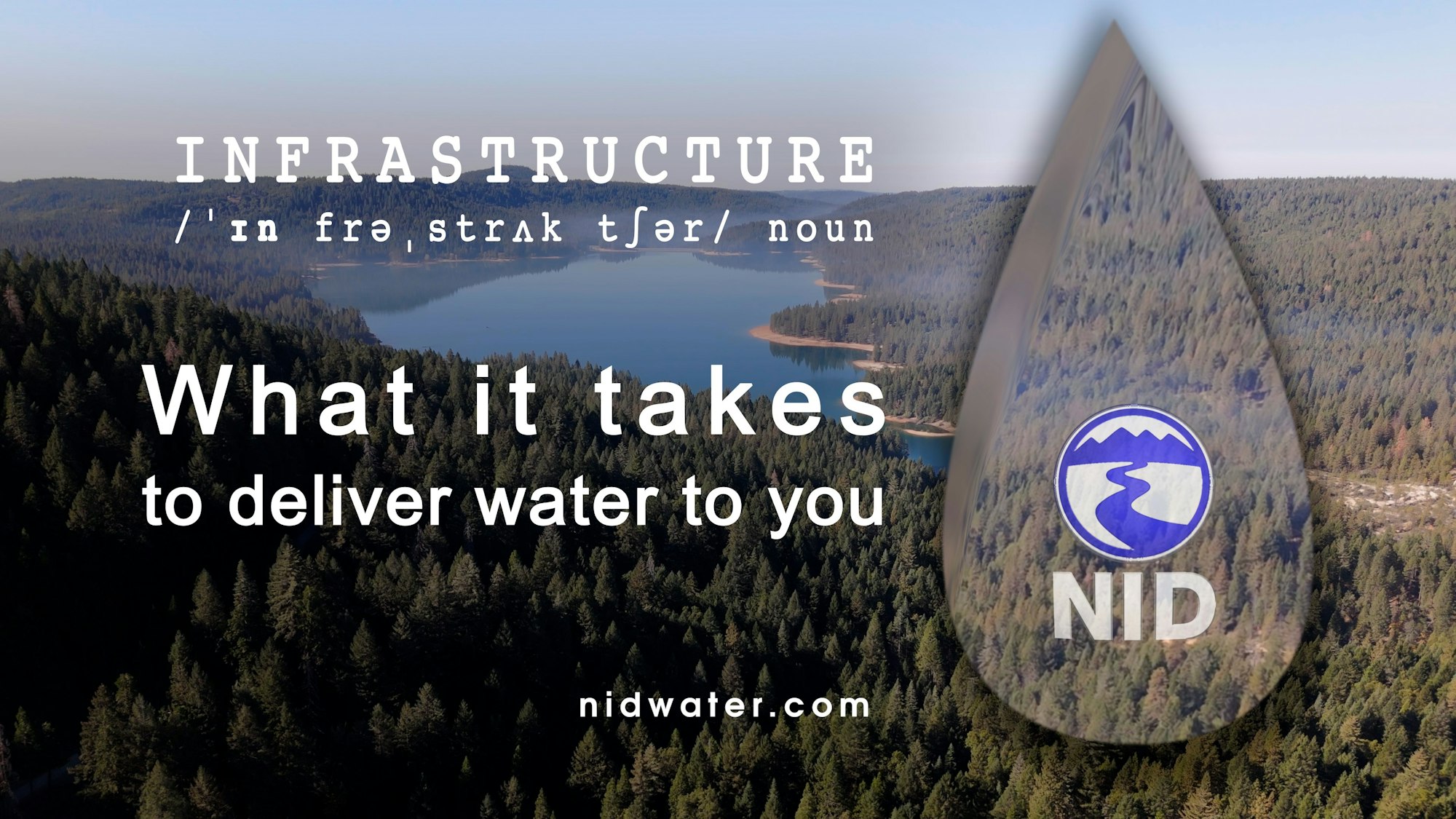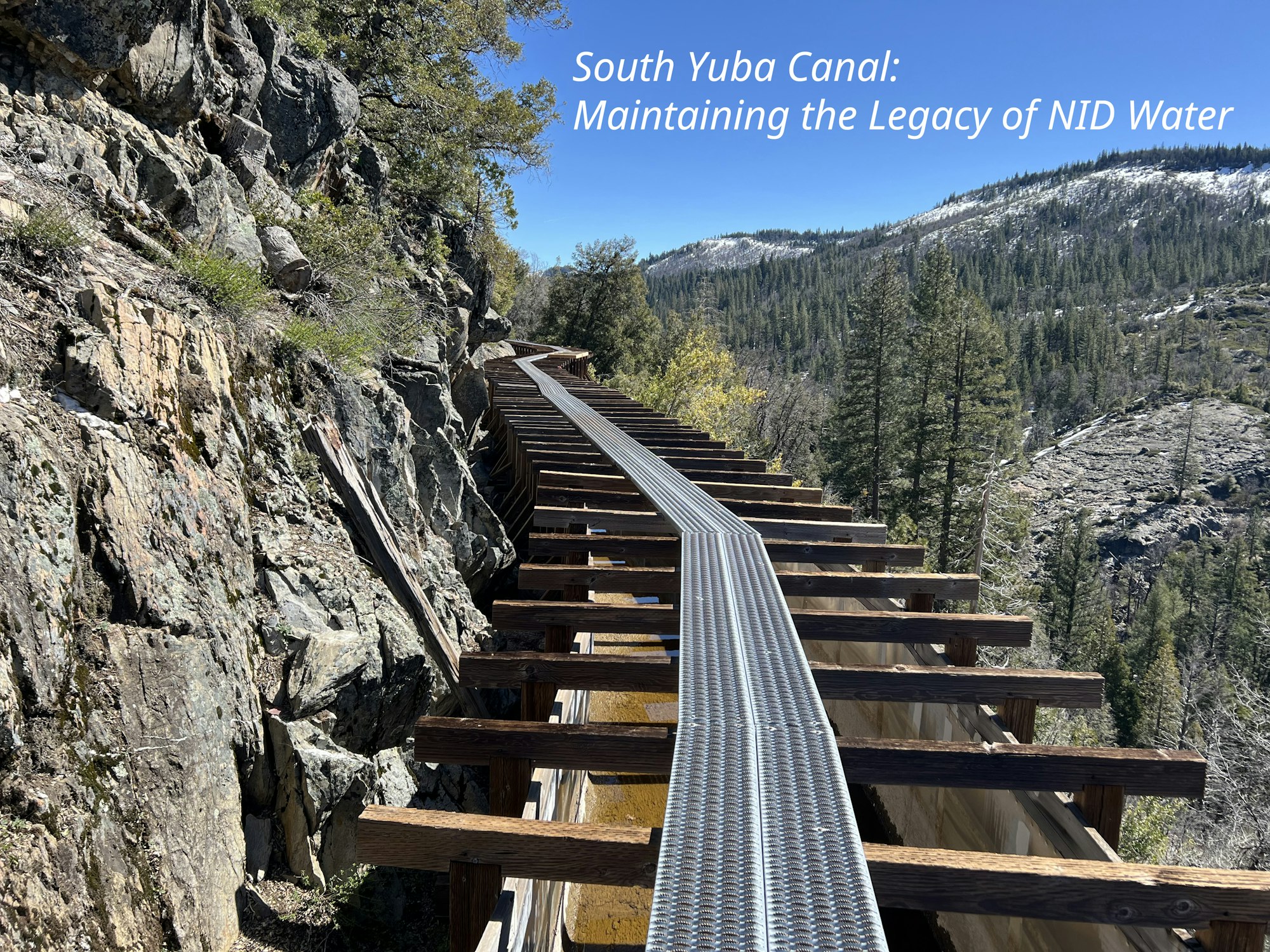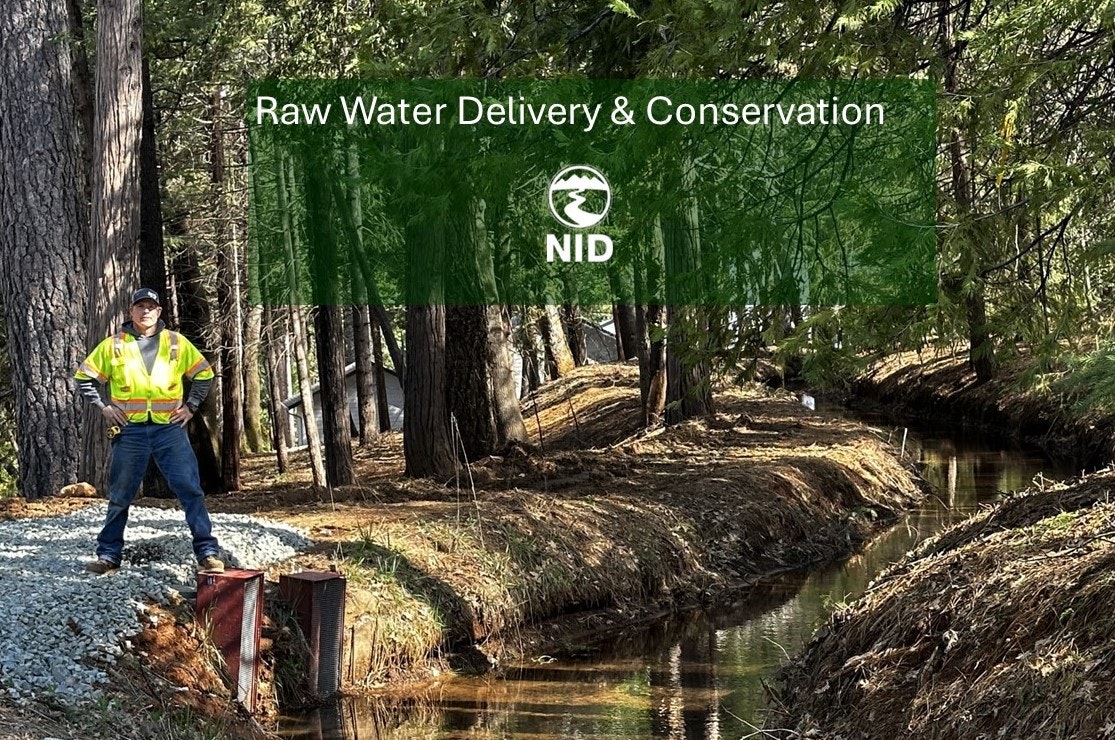Infrastructure: Short Videos

The importance of infrastructure to keep water flowing has been making headlines lately. So what is infrastructure as it relates to NID and, ultimately, to you?
At NID, infrastructure includes dams, reservoirs, treatment facilities, canals, conduits and pipes. In addition, the District generates hydroelectricity, which requires powerhouses, afterbays and forebays.
That’s a lot. We’d like to break it down with examples. Through short videos highlighting different infrastructure components, our employees will tell you about their roles in keeping the NID system operating efficiently so you get reliable deliveries of water.

South Yuba Canal: Maintaining the Legacy of NID Water
NID crews spent two weeks to repair and reinforce portions of the canal. A helicopter flew in and dropped beams and girders to workers positioned on a narrow walkway atop the flume and canal.
Take a front-row seat to the work, with incredible views and a clear perspective of what it takes to maintain the canal
Click to watch the video (2:52 minutes)

NID installs an automated head gate on the Rex Canal to provide real-time data and information that operators can access from a remote location. The benefit the canal can have a steady run instead of fluctuations.
Click to watch the video (1:55 minutes)

Anatomy of a Powerhouse - “It’s pretty unique”
Now, this is something you have never seen before. Come along for a tour inside the NID hydroelectric powerhouse at Dutch Flat.
Background: Dutch Flat No. 2 Powerhouse is an off-stream powerhouse on the Bear River. It was constructed in 1964-65 as part of the Yuba-Bear Hydropower Project. The powerhouse is rated at 24.57 megawatts (MW).
Click to watch the video (1:41 minutes)
Surveying Dams for Safety - “We used to just measure by stringline in the old days”

As a safety measure, the NID survey team monitors the dam at Lower Scotts Flat to check for horizontal and vertical movement.
Background: NID surveyors constantly monitor the District’s dams as a safety function. Data is logged over time to provide information regarding the effects of aging, earthquakes, erosion, storm events, and other variables on the overall health of the dam.
Back in the day, surveyors used stringline to measure a dam and see if it was deformed. Today, technology allows surveyors to be absolutely precise with their measurements.
So how is it done? Watch the video (2:07 minutes), click here.

Dutch Flat #2 Flume Repair - “This canal is all about electricity” “There’s always something to do”
The flume is constantly monitored, and during the planned outage when water is shut off, crews get busy
Click to watch the video (2:25 minutes)

NID Cascade Canal Raw Water Conservation
When customers want to conserve raw water, how do they do it? Watch an NID operator transform 1 miners inch to 1/2 miner's inch
Click to watch the video (2:16 minutes)
